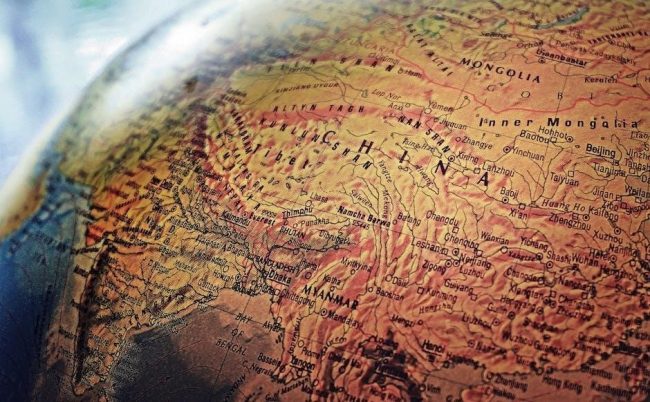Ladyboys‚ known as Kathoeys in Thai culture‚ hold significant cultural and social roles‚ blending entertainment with personal identity‚ while navigating societal challenges and acceptance.
What is a Ladyboy?
A ladyboy‚ often referred to as a Kathoey in Thai culture‚ is a term used to describe individuals who identify as transgender women or effeminate gay men. They often express their gender through feminine appearance‚ behavior‚ and mannerisms. Ladyboys may undergo hormone therapy‚ cosmetic surgery‚ or other forms of gender expression to align with their identity. However‚ not all ladyboys identify as female‚ and their experiences vary widely. The term is primarily associated with Thailand‚ where it is deeply rooted in cultural and social contexts. Ladyboys play a unique role in Thai society‚ blending traditional gender norms with modern forms of self-expression. Their identity is a complex interplay of personal choice‚ societal expectations‚ and cultural acceptance.
Origins of the Term “Ladyboy”
The term “ladyboy” is believed to have originated in Thailand‚ blending Western influences with local culture. It combines the English word “lady” with “boy‚” reflecting a blend of femininity and masculinity. Historically‚ the term gained popularity in the mid-20th century as Thailand became a hub for gender diversity. The concept of a third gender‚ known as Kathoey‚ has roots in Buddhist scriptures‚ which recognize three genders: male‚ female‚ and Kathoey. Over time‚ “ladyboy” became a widely recognized term‚ especially in tourist areas like Bangkok and Pattaya‚ where it is often associated with entertainment and nightlife. Today‚ the term is used globally to describe transgender women or effeminate individuals‚ primarily in Thailand‚ where it holds cultural significance.

History of Ladyboys in Thailand
Ladyboys have deep roots in Thai culture‚ with historical references dating back to the 14th century. The term “Kathoey” reflects a traditional third-gender recognition in Buddhism‚ evolving into modern Thailand’s vibrant ladyboy culture‚ blending tradition with contemporary acceptance and visibility.
Early Beginnings in the 14th Century
The concept of ladyboys in Thailand traces back to the 14th century‚ with historical records indicating the presence of individuals identifying as Kathoey. Buddhist scriptures from that era acknowledge three genders: male‚ female‚ and Kathoey‚ providing early cultural recognition. These individuals often held unique roles in society‚ blending elements of both masculine and feminine traits. The Kathoey identity was not merely a modern construct but deeply rooted in Thailand’s historical and religious fabric. Early accounts suggest that Kathoeys were accepted in various social contexts‚ though their roles and perceptions evolved over time. This historical foundation laid the groundwork for the modern understanding of ladyboys in Thai culture‚ blending tradition with contemporary identity expression.
Evolution Over the Centuries
Over the centuries‚ the role and perception of ladyboys in Thailand have evolved significantly. From their early recognition in the 14th century‚ Kathoeys transitioned from being a culturally acknowledged third gender to facing periods of societal stigma. Buddhist teachings played a pivotal role in shaping their identity‚ as scriptures acknowledged three genders‚ influencing their acceptance. By the 20th century‚ ladyboys became prominent in entertainment and tourism‚ particularly in cities like Bangkok and Pattaya. Despite their cultural presence‚ they often faced challenges in gaining full societal acceptance. Today‚ while ladyboys remain a vibrant part of Thai culture‚ they continue to navigate issues of identity‚ social inequality‚ and legal rights‚ reflecting both progress and persistent obstacles in their journey toward full recognition.
Cultural Significance
Ladyboys hold a unique place in Thai culture‚ reflecting Buddhist influences and societal acceptance. They embody a blend of tradition and modernity‚ symbolizing Thailand’s diverse gender expressions and identities.
Religious Influences: Buddhism and Kathoey
Buddhism plays a pivotal role in shaping Thailand’s perception of ladyboys‚ known locally as Kathoeys. Buddhist scriptures recognize three genders: male‚ female‚ and Kathoey‚ fostering a cultural understanding of gender diversity. This religious acceptance allows Kathoeys to coexist harmoniously within Thai society‚ where temples often provide spiritual support. However‚ while Buddhism offers tolerance‚ societal challenges persist‚ highlighting the complex interplay between faith and identity. The integration of Buddhist teachings into daily life contributes to Thailand’s relatively progressive attitude toward ladyboys‚ distinguishing it from many other cultures worldwide.
Cultural Acceptance in Modern Thailand
Modern Thailand exhibits a remarkable level of cultural acceptance toward ladyboys‚ particularly in urban areas like Bangkok and Pattaya. While often associated with sex tourism in Western perceptions‚ many ladyboys lead ordinary lives‚ working in diverse professions and integrating seamlessly into society. Thai culture’s openness allows ladyboys to participate freely in cultural events and daily life‚ earning respect and visibility. This acceptance contrasts sharply with global stereotypes‚ showcasing Thailand’s progressive attitudes. Despite challenges‚ their presence in media‚ entertainment‚ and public roles highlights their active contribution to Thai society‚ reflecting a harmonious blend of tradition and modernity.

Recognizing Ladyboys
Ladyboys are often identified by their physical characteristics‚ fashion choices‚ and confident demeanor‚ blending traditional Thai elegance with modern expressions of identity and self-expression.
Physical Characteristics and Fashion
Ladyboys often embrace a blend of beauty and confidence through their appearance. They typically wear high heels or platform shoes‚ with open-toe designs showcasing long‚ well-groomed toenails. Their fashion choices frequently include stylish‚ form-fitting clothing that accentuates femininity‚ such as tight dresses or elegant outfits. Makeup and hairstyles also play a significant role‚ with many opting for bold‚ glamorous looks. Physical traits like manicured nails‚ smooth skin‚ and a graceful demeanor further enhance their feminine presentation. These elements reflect a deep commitment to their gender expression‚ often aligning with traditional Thai notions of beauty while embracing modern fashion trends. Their style is both a form of self-expression and a way to connect with their identity;
Behavioral Traits and Mannerisms
Ladyboys often exhibit confident and charismatic personalities‚ blending charm with a sense of humor. Their mannerisms frequently reflect a heightened sense of femininity‚ such as expressive gestures‚ graceful movements‚ and a distinctive tone of voice. Many ladyboys are known for their sharp wit and ability to engage in lively conversations‚ making them standout in social settings. Their behavior often aligns with traditional feminine norms‚ yet they also embrace individuality and self-expression. In public‚ ladyboys tend to carry themselves with poise‚ drawing attention through their vibrant energy and approachable nature. These traits not only reflect their identity but also play a role in how they interact with others in both social and professional environments.

Meeting Ladyboys in Thailand
Thailand offers vibrant opportunities to encounter ladyboys‚ particularly in Bangkok and Pattaya‚ where their culture thrives‚ blending entertainment and everyday life seamlessly.
Bangkok: Nana Plaza and Soi Cowboy
Bangkok’s Nana Plaza and Soi Cowboy are iconic hotspots for encountering ladyboys‚ offering a vibrant mix of entertainment and culture. These areas are renowned for their lively bars‚ go-go clubs‚ and street performances‚ creating an atmosphere that blends intrigue and excitement. Ladyboys in these regions often work in entertainment venues‚ showcasing their charisma and talent through elaborate shows and interactions with visitors. Nana Plaza‚ in particular‚ is a hub for ladyboy culture‚ with numerous bars featuring performances that attract both locals and tourists. Soi Cowboy‚ while more diverse‚ also hosts venues where ladyboys are a central part of the entertainment. These areas provide a unique opportunity to experience Thailand’s ladyboy culture firsthand‚ offering insights into their lives and societal roles.
Pattaya: The Hub of Ladyboy Culture
Pattaya stands as the epicenter of ladyboy culture in Thailand‚ where their presence is deeply woven into daily life and entertainment. The city’s vibrant areas‚ such as Walking Street‚ Beach Road‚ and Pattaya Avenue‚ are bustling with ladyboys who work in bars‚ cabarets‚ and as street performers. Known for their charisma and flair‚ Pattaya’s ladyboys attract both tourists and locals alike‚ offering a blend of entertainment and cultural intrigue. The city’s accepting atmosphere makes it a hub where ladyboys thrive‚ contributing to Pattaya’s reputation as a destination for diverse experiences. This vibrant scene provides a unique glimpse into the lives and roles of ladyboys in modern Thai society.
Other Cities and Regions
While Bangkok and Pattaya dominate the ladyboy scene‚ other Thai cities and regions also offer unique encounters. Chiang Mai‚ known for its cultural richness‚ hosts ladyboys in smaller‚ more discreet settings‚ often blending tradition with modern identity. Phuket’s Patong district and Koh Samui’s nightlife also feature ladyboys‚ though in fewer numbers. These areas provide opportunities to engage with ladyboys in diverse contexts‚ from local festivals to intimate bars. The presence of ladyboys in these regions highlights their integration into Thai society‚ showcasing a blend of tradition and modernity. Tourists can explore these areas to experience the cultural diversity and acceptance of ladyboys beyond the major hubs.

Ladyboy Lifestyle and Challenges
Ladyboys in Thailand navigate a unique blend of cultural acceptance and societal challenges‚ balancing personal identity with daily life‚ while facing discrimination and limited opportunities in certain sectors.
Daily Life and Social Interactions
Ladyboys in Thailand often lead vibrant lives‚ balancing work‚ social interactions‚ and personal identity. Many are employed in entertainment sectors‚ such as bars‚ shows‚ or massage parlors‚ where their charisma and presence attract both locals and tourists. Despite cultural acceptance‚ they may face discrimination in certain professional settings‚ limiting career opportunities. Socially‚ ladyboys frequently gather in supportive communities‚ sharing experiences and fostering camaraderie. While some engage in romantic relationships‚ societal perceptions can complicate these dynamics. Family acceptance varies‚ with some receiving love and others facing rejection. Daily life involves navigating these complexities while maintaining resilience and pride in their identity. Their ability to thrive in such environments highlights their strength and adaptability;
Societal Perception and Challenges
Despite Thailand’s relatively accepting culture‚ ladyboys face societal challenges‚ including discrimination and stereotyping. Many are perceived solely through the lens of the entertainment or sex industry‚ limiting their professional opportunities. While cities like Bangkok and Pattaya embrace their presence‚ rural areas often exhibit more conservative attitudes. Family acceptance can vary widely‚ with some receiving support and others facing rejection. Ladyboys frequently encounter stereotypes that reduce their identity to simplistic or sensationalized narratives. These challenges highlight the need for greater understanding and advocacy to ensure their rights and dignity are recognized. Societal perceptions often create a duality of acceptance and marginalization‚ underscoring the complexity of their experiences in Thai society.

Legal and Social Aspects
Ladyboys in Thailand face unique legal challenges‚ as their gender identity is not fully recognized‚ despite growing societal acceptance. Their rights and protections remain limited‚ fostering ongoing debates about equality and inclusion in Thai society.
Legal Status and Rights
In Thailand‚ the legal status of ladyboys remains unresolved‚ as the law does not fully recognize gender identity beyond male and female. Despite cultural acceptance‚ ladyboys face discrimination and lack legal protections‚ particularly in employment‚ housing‚ and marriage. Thai law requires individuals to use the gender assigned at birth for official documents‚ creating barriers for those seeking legal recognition. This lack of recognition perpetuates societal discrimination‚ even as ladyboys gain visibility in media and culture. Efforts to reform laws and expand rights are ongoing‚ but progress is slow‚ leaving many ladyboys in a legal and social limbo‚ struggling for equality and acceptance in a traditionally conservative society.
Social Acceptance in Thai Society
Thai society exhibits a complex mix of acceptance and discrimination toward ladyboys. While they are highly visible in entertainment and culture‚ gaining admiration for their talent and beauty‚ societal acceptance varies. In urban areas like Bangkok and Pattaya‚ ladyboys are often embraced‚ working in diverse fields such as entertainment‚ fashion‚ and service industries. However‚ in more conservative rural regions‚ they may face prejudice and limited opportunities. Despite their cultural prominence‚ ladyboys often encounter discrimination in education‚ employment‚ and family acceptance. This duality reflects Thailand’s progressive yet traditionally rooted society‚ where ladyboys navigate a path between celebration and marginalization‚ striving for greater inclusivity and understanding; Their resilience and visibility continue to challenge societal norms‚ fostering gradual change and acceptance.

Health and Wellness
Ladyboys face unique health challenges‚ including access to hormone therapy and surgeries. Mental health support is crucial due to societal pressures and discrimination they often encounter.
Physical Health Considerations
Physical health is a critical aspect of life for ladyboys‚ particularly due to hormone therapy and surgical procedures. Many undergo breast implants‚ facial surgeries‚ and gender-affirming operations‚ requiring careful medical supervision. However‚ access to quality healthcare can be limited‚ leading some to seek risky‚ unregulated procedures. Additionally‚ the use of hormones without professional guidance poses serious health risks‚ including blood clots and liver damage. Ladyboys also face challenges like infections from unsafe injections or surgeries. Their lifestyle‚ often involving high heels and restrictive clothing‚ can lead to long-term physical strain. Despite these challenges‚ advancements in medical care and growing awareness are improving health outcomes for ladyboys in Thailand.
Mental Health and Support
Mental health is a vital yet often overlooked aspect of life for ladyboys‚ who face societal discrimination‚ stigma‚ and emotional challenges. Many experience psychological distress due to societal perceptions and lack of acceptance. Support systems are growing‚ with organizations providing counseling and community support to help ladyboys cope with mental health issues. Despite these efforts‚ access to mental health services remains limited‚ particularly in rural areas. Ladyboys often rely on their communities for emotional support‚ highlighting the importance of strong social networks. Advocacy groups are increasingly addressing these challenges‚ promoting mental well-being and fostering a more inclusive environment for ladyboys in Thailand.

The Sex Industry’s Role
The sex industry plays a significant role in the visibility and livelihood of many ladyboys‚ offering economic opportunities but also sparking debates about exploitation and ethics.
Industry Overview and Practices
The sex industry in Thailand prominently features ladyboys‚ with many engaged in bars‚ go-go clubs‚ and escort services. These venues‚ particularly in Bangkok and Pattaya‚ cater to both tourists and locals; Ladyboys often work in establishments like Nana Plaza and Soi Cowboy‚ where they perform‚ entertain‚ or provide companionship. The industry is a significant economic driver‚ offering income opportunities for many. However‚ it also raises concerns about exploitation and working conditions. Practices vary widely‚ from high-end escort services to street-based work. While some ladyboys find financial stability‚ others face challenges like limited job alternatives and societal stigma. The industry remains a complex and controversial aspect of Thailand’s culture.
Debate and Ethical Considerations
The involvement of ladyboys in Thailand’s sex industry sparks intense debate. While some view it as a means of empowerment and financial stability‚ others criticize the exploitation and objectification of these individuals. Ethical concerns arise regarding consent‚ working conditions‚ and human rights. Critics argue that the industry often perpetuates harmful stereotypes and commodifies gender identity. Additionally‚ the intersection of tourism and sex work raises questions about ethical consumption and the commodification of culture. Advocates‚ however‚ emphasize the autonomy of ladyboys to choose their profession and highlight the lack of alternative employment opportunities; The debate underscores the need for improved protections‚ rights‚ and societal acceptance to ensure dignity and fair treatment for all individuals involved. This complex issue demands a nuanced understanding of cultural‚ economic‚ and ethical dimensions.

Personal Stories and Media
Personal stories of ladyboys highlight their unique journeys‚ challenges‚ and triumphs‚ offering insights into their identities and experiences. Media representation‚ from documentaries to TV shows‚ has amplified their voices‚ fostering greater understanding of their culture and struggles while challenging stereotypes and promoting acceptance globally.
Individual Narratives
Individual stories of ladyboys provide a deeper understanding of their unique experiences‚ struggles‚ and triumphs. Many share narratives of self-discovery‚ from early childhood feelings of gender dysphoria to embracing their identities. These personal accounts highlight the diversity within the ladyboy community‚ showcasing how some pursue careers in entertainment‚ while others lead ordinary lives. Societal perceptions play a significant role‚ with acceptance varying widely. Despite challenges‚ many ladyboys find support within their communities and through advocacy groups. Their stories reveal resilience and determination‚ offering insight into the complexities of gender identity and cultural norms. These narratives humanize the ladyboy experience‚ emphasizing their aspirations‚ hopes‚ and contributions to Thai society and beyond.
Representation in Media
Ladyboys have gained significant visibility in media‚ with their stories featured in films‚ TV shows‚ and documentaries. These portrayals often highlight their cultural identity and the challenges they face. While media representation has helped raise awareness‚ it sometimes perpetuates stereotypes‚ focusing on sensationalism rather than depth. Positive depictions showcase their talents and resilience‚ while others reduce them to simplistic narratives. The Ladyboy community remains a subject of fascination‚ with media often walking a fine line between celebration and exploitation. Their presence in global entertainment continues to grow‚ offering opportunities for authentic storytelling and greater understanding of their experiences.

Dating and Relationships
Dating a ladyboy involves understanding their unique identity and cultural context‚ requiring open communication and respect for their journey‚ fostering meaningful connections beyond stereotypes.
Dating Locals and Tourists
Dating locals and tourists presents unique dynamics for ladyboys in Thailand. While some locals may embrace their identity‚ societal norms can complicate relationships‚ with acceptance varying by region. Tourists often approach ladyboys with curiosity or specific intentions‚ sometimes linked to Thailand’s reputation for sex tourism. However‚ many ladyboys seek genuine connections‚ emphasizing the importance of respect and understanding. Building trust is crucial‚ as societal stigma and misunderstandings can arise. Open communication and mutual respect are key to fostering meaningful relationships‚ whether with locals or visitors. Ladyboys often value honesty about intentions and boundaries‚ ensuring both parties navigate cultural and emotional landscapes thoughtfully.
Building Meaningful Relationships
Building meaningful relationships with ladyboys requires mutual respect‚ trust‚ and open communication. Understanding their unique experiences and perspectives is essential‚ as they often navigate societal expectations and personal identity. Respectful dialogue about boundaries and intentions helps foster deeper connections. Many ladyboys value long-term relationships‚ seeking partners who appreciate them beyond surface-level attraction. Patience and empathy are key‚ as cultural differences and societal challenges may impact their willingness to open up. By prioritizing emotional connection and shared values‚ meaningful relationships can flourish‚ offering fulfillment for both parties. It’s important to approach these relationships with an open heart and mind‚ recognizing the richness of their experiences and individuality.
Ladyboys‚ a cultural phenomenon‚ blend entertainment with personal identity‚ facing societal challenges while seeking acceptance. Their journey highlights resilience and the quest for understanding in modern Thailand.
Final Thoughts
Ladyboys‚ or Kathoeys‚ embody a unique blend of cultural identity and personal expression in Thai society. Their presence highlights the complexities of gender roles and societal acceptance. While they are often associated with entertainment and tourism‚ their lives extend far beyond these stereotypes. Many ladyboys navigate daily challenges‚ balancing traditional expectations with modern aspirations. Their stories reveal resilience and adaptability‚ offering insights into the broader conversation about gender diversity. Understanding ladyboys requires empathy and an open mind‚ recognizing their contributions to Thai culture and society. Their journey toward acceptance is a testament to the evolving nature of identity and the enduring human quest for belonging;
Future Outlook
The future for ladyboys in Thailand looks promising‚ with increasing societal acceptance and legal reforms on the horizon. As gender diversity gains global recognition‚ Thai culture may continue to embrace its unique third gender identity. Younger generations are more open-minded‚ fostering a more inclusive environment. Advances in medical technology and social media will further empower ladyboys to express themselves authentically. However‚ challenges like stigma and limited opportunities persist‚ requiring ongoing advocacy. The ladyboy community’s strength and resilience suggest a bright future‚ where they can thrive beyond stereotypes and contribute fully to Thai society. Their journey toward equality and recognition is a testament to the power of cultural evolution and human resilience.
